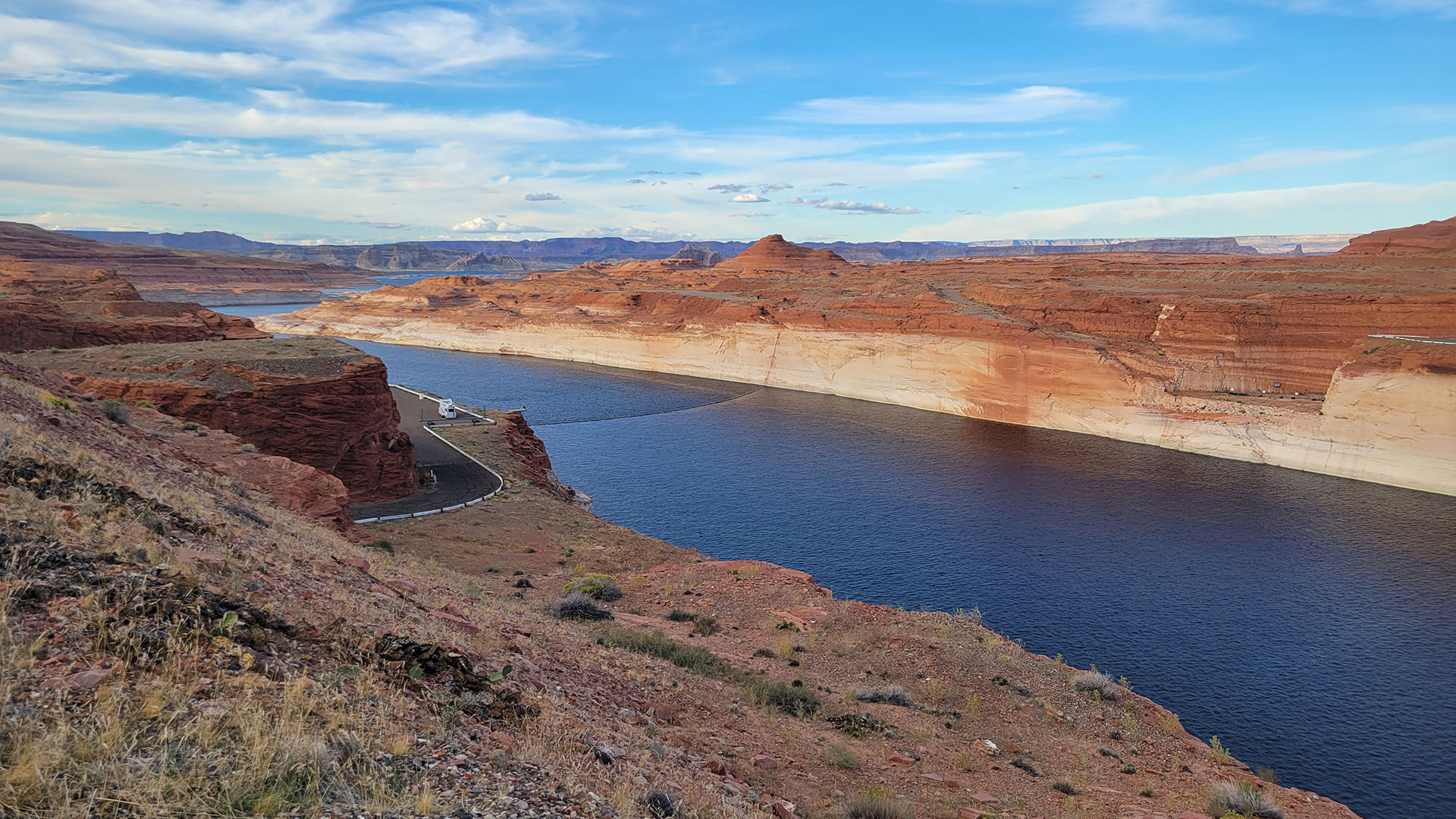 Bands of discolored rock show that Lake Powell's water levels are lower than they have been for much of its past.
Bands of discolored rock show that Lake Powell's water levels are lower than they have been for much of its past.
In an effort to prevent its system reservoirs from falling to critical low levels, the Bureau of Reclamation has introduced new water conservation agreements to conserve more Colorado River water through 2026.
Camille Calimlim Touton, Reclamation Commissioner, said “We are on path to conserve 3 million acre-feet of water through 2026, 2.3 million acre-feet of which will be compensated through funding from President Biden’s Investing in America Agenda.”
The proposal is part of ongoing initiatives to update existing water conservation guidelines set to expire at the end of 2026.
Reclamation's new plan allows for reducing releases from Lake Powell if the reservoir is projected below 3,500 feet over the next 12 months. That is just 61 feet below its current level.
The good news is that Lake Powell’s current elevation is 41 feet higher at 3561 feet than this time last year.
Additionally Reclamation announced three new system conservation implementation agreements in California, that would save 400,000 acre-feet of water in Lake Mead through 2026.
These agreements build upon 21 previous agreements in the Colorado River Basin.
Michael Brain, principal deputy assistant secretary for water and science for Reclamation said, “All 24 agreements are expected to conserve more than 1.58 million acre-feet of water with an investment of up to $670.2 million.”
The potential investment is derived from the Inflation Reduction Act (IRA), allocating $4.6 billion across the West to address extreme drought.
Lake Mead levels have risen by two acre-feet, marking the highest point since May 2021, measuring at 1075 feet compared to 1073 in May 2021.
The new agreements include a second commitment of up to 30,000 acre-feet with the Coachella Valley Water District, a commitment of up to 351,063 acre-feet with the Palo Verde Irrigation District in collaboration with Metropolitan Water District and an agreement with Bard Water District in cooperation with Metropolitan Water District, up to 18,090 acre-feet.
This announcement by the largest water wholesaler aligns with the release of a final Supplemental Environmental Impact Statement (SEIS), to update existing operating guidelines of Glen Canyon and Hoover Dams.
This short term plan differs from ongoing long-term efforts expected to be implemented in 2027, to replace the existing 2007 Colorado River Interim Guidelines for Lower Basin Shortages and the Coordinated Operations for Lake Powell and Lake Mead, which expire at the end of 2026.
The initial draft of the SEIS was released in April 2023, and a revised draft in October 2023.
Touton highlighted that the SEIS process has included more than 27 Nation-to-Nation consultations.
“We are publishing the final supplemental environmental impact statement that identifies the lower division proposal as our chosen alternatives,” Touton said.
Laura Daniel-Davis, acting deputy secretary of the Interior emphasized the post-2026 process would prioritize collaboration between all seven Basin states and the federal government, aiming to move away from a divisive us-versus-them approach.
“Starting this month, based on the diverse alternatives we will have received from the basin states, tribes, nongovernmental organizations and other stakeholders, Reclamation will begin preparing the draft environmental impact statement for the post-2026 guidelines,” Daniel-Davis said.
The agency anticipates publishing the draft EIS by the end of the year, followed by a public comment period with hopes of finalizing the plan late next year.
Daniel-Davis added that this marks the first federal, state and tribal partnership in the post-2026 process.
Touton noted that extensive funding from President Biden’s Investing in America agenda has enhanced existing water infrastructure and the efficiency of water usage.
Through the Bipartisan Infrastructure Law (BIL), Reclamation is allocated $8.3 billion for water infrastructure projects over five years, addressing aging water delivery systems, completing rural water projects, ensuring dam security and safety and supporting desalination projects.
Reclamation has already provided $2.9 billion to fund over 425 water projects across the West, through the BIL and IRA.
In Arizona, investments have include the Gila River Community’s Reclaimed Water Pipeline Project, that would generate 20,000 acre-feet of the Colorado River System annually, with a minimum of 78,000 acre-feet reserved in Lake Mead as well as the construction of solar panels spanning the Casa Blanca Canal within the community’s reservation.
The Colorado River Basin sustains water for over 40 million people, is a crucial resource for 30 Tribal Nations, drives hydropower in eight states and supports agriculture across the West.

By submitting your comments, you hereby give AZPM the right to post your comments and potentially use them in any other form of media operated by this institution.